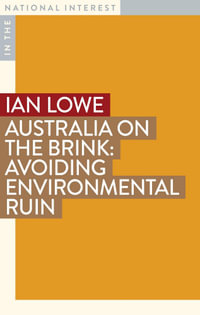| Series Preface | p. ix |
| Series Editor | p. xi |
| Preface | p. xiii |
| About the Authors | p. xvii |
| Disclaimer | p. xix |
| Notations | p. xxi |
| Axial Force-Bending Moment Yield Interaction | p. 1 |
| Summary | p. 1 |
| Introduction | p. 1 |
| Mathematical Development | p. 3 |
| Identification of Subdomains | p. 5 |
| Subdomains 1 and 2: Collapose Caused by Yielding of Steel | p. 5 |
| Subdomains 3 to 6: Collapse Caused by Crushing of Concrete | p. 12 |
| Numerical Studies and Discussions | p. 13 |
| Conclusions | p. 41 |
| Numerical Procedure in Spreadsheet Format | p. 41 |
| Moment-Curvature Relationship for RC Sections | p. 43 |
| Summary | p. 43 |
| Introduction | p. 43 |
| Mathematical Development | p. 45 |
| Moment-Curvature in Elastic Range | p. 45 |
| Tensile Axial Force | p. 46 |
| No Axial Force | p. 48 |
| Compressive Axial Force | p. 48 |
| Elastic Limit Bending Moment and Curvature | p. 50 |
| Case 1: Strain in Tension Steel Reaches Yield Limit and Stress in Concrete Vanishes | p. 50 |
| Case 2: Strain in Tension Steel Reaches Yield Limit and Stress in Concrete Does Not Equal Zero | p. 50 |
| Case 3: Strain in Compression Steel Reaches Elastic Limit Value | p. 52 |
| Case 4: Strain in Extreme Compression Fiber in Concrete Reaches Elastic Limit Value | p. 53 |
| Percentage of Steel for Balanced Section | p. 54 |
| Ultimate Bending Moment-Curvature Relationship | p. 56 |
| Neutral Axis Position Assuming Negative Values | p. 56 |
| Neutral Axis Position Assuming Positive Values | p. 56 |
| Numerical Studies and Discussions | p. 62 |
| Conclusions | p. 85 |
| Spreadsheet Program | p. 86 |
| Step-by-Step Procedure to Use the Spreadsheet Program Given on the Web Site | p. 86 |
| Moment-Rotation Relationship for RC Beams | p. 89 |
| Summary | p. 89 |
| Introduction | p. 89 |
| Mathematical Development | p. 90 |
| Analytical Moment-Rotation Relationships | p. 92 |
| Fixed Beam under Central Concentrated Load | p. 93 |
| Simply Supported Beam under Central Concentrated Load | p. 98 |
| Fixed Beam under Uniformly Distributed Load | p. 101 |
| Numerical Studies and Discussions | p. 106 |
| Conclusions | p. 114 |
| Spreadsheet Program | p. 115 |
| Step-by-Step Procedure to Use the Numerical Method on the Web Site | p. 115 |
| Bounds for Collapse Loads of Building Frames Subjected to Seismic Loads: A Comparison with Nonlinear Static Pushover | p. 117 |
| Summary | p. 117 |
| Introduction | p. 118 |
| Collapse Multipliers | p. 118 |
| Kinematic Multiplier, Kk | p. 120 |
| Static Multiplier, Ks | p. 122 |
| Step-by-Step Analysis for a Simple Frame with P-M Interaction | p. 124 |
| Numerical Studies and Discussions | p. 131 |
| Conclusions | p. 137 |
| Flow Rule Verification for P-M Interaction Domains | p. 139 |
| Summary | p. 139 |
| Introduction | p. 139 |
| Mathematical Development | p. 140 |
| Subdomains 1 to 2b(2): Collapse Caused by Yielding of Steel | p. 144 |
| Subdomains 3 to 6b: Collapse Caused by Crushing of Concrete | p. 150 |
| Plastic Strain Increment in Different Subdomains | p. 150 |
| Verification of Flow Rule | p. 156 |
| Conclusions | p. 157 |
| Appendix Summary of P-M Relationships for Different Subdomains | p. 159 |
| Computer Coding for Collapse Multipliers | p. 165 |
| Introduction | p. 165 |
| Computer Coding for Collapse Multipliers | p. 165 |
| Single Bay-Single Story Regular Frame | p. 165 |
| Single Bay-Two Story Regular Frame | p. 171 |
| Single Bay-Single Story Frame with Unequal Column Length | p. 172 |
| Four Bay-Two Story Regular Frame | p. 174 |
| Six Bay-Three Story Irregular Frame | p. 175 |
| Six Bay-Three Story Regular Frame | p. 177 |
| Five Bay-Ten Story Regular Frame | p. 179 |
| General Procedure for Regular Frames with M Bays-N Stories | p. 182 |
| Computer Coding to Compute Static Collapse Multipliers (LINGO) | p. 189 |
| Procedure to Perform Pushover Analysis | p. 190 |
| Step-by-Step Approach Using SAP2000 | p. 192 |
| References | p. 215 |
| Index | p. 219 |
| Table of Contents provided by Ingram. All Rights Reserved. |
























